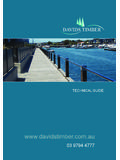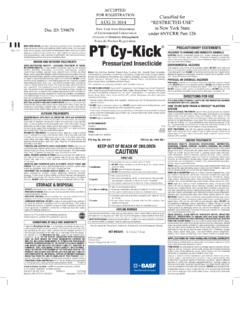Transcription of KEEP OUT OF REACH OF CHILDREN. …
1 For sale to, use and storage only by individuals/firms licensed or registered by the state to apply termiticide and/or general pest control products. Active Ingredient: Chlorfenapyr: 4-bromo-2-(4-chlorophenyl)-1-(ethoxymeth yl). 5-(trifluoromethyl)-1H-pyrrole-3-carboni trile .. Other Ingredients: .. Total: .. 1 gallon contains pounds of active ingredient. EPA Reg. No. 241-392 EPA Est. No. KEEP OUT OF REACH OF children . CAUTION/PRECAUCI N. Si usted no entiende la etiqueta, busque a alguien para que se la explique a usted en detalle. (If you do not understand this label, find someone to explain it to you in detail.). See inside booklet for complete First Aid, Precautionary Statements, Directions For Use and Conditions of Sale and Warranty. For Product Use Information, Call 1-877-837-6436. In case of an emergency endangering life or property involving this product, call day or night 1-800-832-HELP (4357).
2 Net Contents: BASF Corporation 26 Davis Drive Research Triangle Park, NC 27709. FIRST AID. Call a poison control center or doctor immediately for treatment advice. Have person sip a glass of water if able to swallow. If swallowed DO NOT induce vomiting unless told to do so by the poison control center or doctor. DO NOT give anything by mouth to an unconscious person. Take off contaminated clothing. If on skin or clothing Rinse skin immediately with plenty of water for 15-20 minutes. Call a poison control center or doctor for treatment advice. Move person to fresh air. If person is not breathing, call 911 or an ambulance, then give artificial respiration, If inhaled preferably mouth-to-mouth, if possible. Call a poison control center or doctor for treatment advice. Hold eye open and rinse slowly and gently with water for 15-20 minutes. If in eyes Remove contact lenses, if present, after the first 5 minutes, then continue rinsing eye.
3 Call a poison control center or doctor for treatment advice. HOT LINE NUMBER. Have the product container or label with you when calling a poison control center or doctor, or going for treatment. In case of an emergency endangering life or property involving this product, call day or night 1-800-832-HELP (4357). when working in a non-ventilated space when applying PRECAUTIONARY STATEMENTS. termiticide by rodding or sub-slab injection. HAZARDS TO HUMANS. User Safety Recommendations AND DOMESTIC ANIMALS. Users should: CAUTION Wash hands before eating, drinking, chewing gum, Harmful if swallowed, inhaled or absorbed through using tobacco or using the toilet. the skin. Causes moderate eye irritation. DO NOT Remove contaminated clothing. Then wash thoroughly get in eyes, on skin, or on clothing. Avoid breathing and put on clean clothing. vapors or spray mist.
4 Wash thoroughly with soap Remove PPE immediately after handling this product. and water after handling and before eating, drinking, Wash the outside of gloves before removing. As soon chewing gum or using tobacco. Remove contami- as possible, wash thoroughly and change into clean nated clothing and wash clothing before reuse. clothing. Personal Protective Equipment (PPE) Environmental Hazards Some materials that are chemical-resistant to this product This pesticide is toxic to aquatic organisms, birds and are listed below. If you want more options, follow the wildlife. DO NOT apply directly to water or to areas where instructions for Category C on an EPA chemical resist- surface water is present or intertidal areas below the mean ance category selection chart. high water mark. DO NOT contaminate water by cleaning All pesticide handlers (mixers, loaders and applica- of equipment or when disposing of equipment washwa- tors) must wear: ters or rinsate.
5 Long-sleeved shirt and long pants Physical or Chemical Hazards Chemical-resistant gloves such as barrier laminate, butyl DO NOT apply this product around electrical equipment rubber or nitrile rubber, neoprene, or polyvinyl chloride due to the possibility of shock hazard. (PVC), or viton ( 14 mils). Shoes plus socks Storage and Disposal DO NOT contaminate water, food, or feed by storage or Follow manufacturer's instructions for cleaning/maintaining disposal. PPE. If no such instructions for washables, use detergent and hot water. Keep and wash PPE separately from other Pesticide Storage: Store in original container in secure laundry. dry storage area. DO NOT store below 32 degrees F. DO NOT store in direct sunlight or heat. In addition, all termiticide handlers must wear a dust/mist filtering respirator (MSHA/NIOSH Approved Number Prefix To Contain a Spill: In case of spills, avoid contact and TC-21C) or a NIOSH approved respirator with any N, R, P isolate area.
6 To confine spills, dike surrounding area or or HE filter, when working in a non-ventilated space, absorb with sand, cat litter, commercial clay, gel or similar including but not limited to crawl-spaces and basements; absorbents. all termiticide handlers must wear protective eyewear 2. Pesticide Disposal: Wastes resulting from the use of this USE DIRECTIONS FOR. product may be disposed of on site or at an approved waste disposal facility. termite CONTROL. Container Disposal: GENERAL PRECAUTIONS FOR. Nonrefillable Container. DO NOT reuse or refill this container. Triple rinse or pressure rinse container (or TERMITICIDE APPLICATIONS. equivalent) promptly after emptying; then offer for recy- When treating adjacent to an existing structure, the cling, if available, or reconditioning, if appropriate, or punc- applicator must check the area to be treated, and imme- ture and dispose of in a sanitary landfill, or by incineration, diately adjacent areas of the structure for visible and or by other procedures approved by state and local accessible cracks and holes to prevent any leaks or sig- authorities.
7 Nificant exposures to persons occupying the structure. People present or residing in the structure during appli- Triple rinse containers small enough to shake cation must be advised to remove their pets and them- (capacity 5 gallons) as follows: Empty the remain- selves from the structure if the applicator or residents ing contents into application equipment or a mix tank see any signs of leakage. After application, the applicator and drain for 10 seconds after the flow begins to drip. is required to check for leaks. All leaks resulting in the Fill the container 1/4 full with water and recap. Shake for deposition of termiticide in locations other than those 10 seconds. Pour rinsate into application equipment or prescribed on this label must be cleaned up prior to a mix tank, or store rinsate for later use or disposal. leaving the application site.
8 DO NOT allow people or Drain for 10 seconds after the flow begins to drip. pets to contact contaminated areas or to reoccupy con- Repeat this procedure two more times. taminated areas of the structure until the clean up is Pressure rinse as follows: Empty the remaining con- completed. tents into application equipment or mix tank and contin- All holes drilled in concrete slabs in commonly occupied ue to drain for 10 seconds after the flow begins to drip. areas into which termiticide has been applied must be Hold container upside down over application equipment plugged. Plugs must be of a non-cellulose material or or mix tank, or collect rinsate for later use or disposal. covered by an impervious, non-cellulose material. Insert pressure rinsing nozzle in the side of the container DO NOT make treatment beneath slabs or similar floor- and rinse at about 40 PSI for at least 30 seconds.
9 Drain ings until the locations of heat or air conditioning duct- for 10 seconds after the flow begins to drip. work, vents, water and sewer lines, and electrical lines/conduits are known and identified. Use extreme DIRECTIONS FOR USE caution to avoid puncturing and contaminating these It is a violation of federal law to use this product in a man- utilities. ner inconsistent with its labeling. This label must be in the When treating crawl spaces or plenum-type structures, possession of the user at the time of pesticide application. turn off any air circulation system that moves air from the For sale to, use and storage only by individuals/firms area to be treated to an untreated interior space of the licensed or registered by the state to apply termiticide structure until application has been completed and all and/or general pest control products.
10 States may have PHANTOM termiticide-insecticide has been more restrictive requirements regarding qualifications of absorbed by the soil. persons using this product. Consult the structural pest DO NOT contaminate wells or cisterns. Consult the control regulatory agency of your state prior to use of this appropriate section of this label as well as state/local product. specifications for recommended distances of wells from treated area, or if such regulations do not exist, refer to Federal Housing Administration ( ) Specifications for guidance. Use anti-backflow or air gap equipment with filling hoses. DO NOT contaminate public or private water supplies. Consult state, federal, or local authorities for information regarding the approved treatment practices for areas in close proximity to potable water supplies. DO NOT treat within a distance of one foot out from the drip line of edible plants.

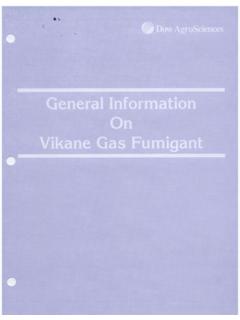

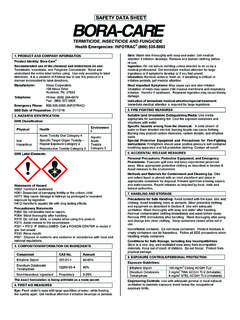

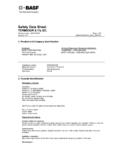




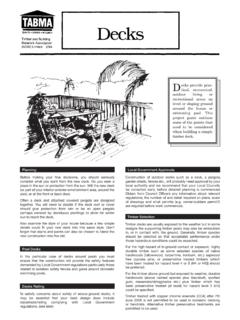
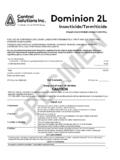

![[Decal] - cdms.net](/cache/preview/e/d/3/7/9/d/0/9/thumb-ed379d0982d91120ea892142998ff208.jpg)

